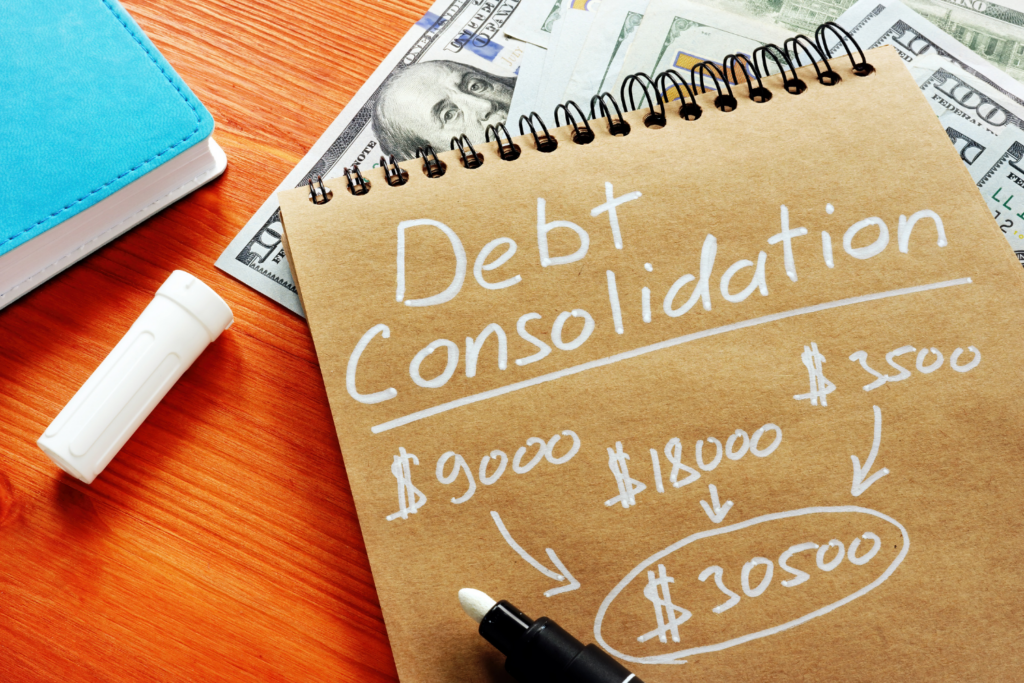
Have you ever watched a tiny snowball roll down a hill, gathering size and momentum until it becomes an unstoppable force? That’s exactly how the debt snowball method transforms your journey to financial freedom. While it might seem counterintuitive to ignore interest rates, this psychology-backed approach has helped millions break free from the chains of debt.
Think of it as a game where each small victory fuels your motivation to tackle bigger challenges. Rather than getting overwhelmed by large balances or complex calculations, the debt snowball method taps into something more powerful: your natural desire to see immediate progress. It’s a strategy that turns the daunting task of debt repayment into an achievable series of wins.
Contents
- Introduction to the Debt Snowball Method
- Steps to Implement the Debt Snowball Method
- Benefits of the Debt Snowball Method
- Potential Challenges and Considerations
- Tips for Enhancing the Debt Snowball Method
- Real-Life Examples and Case Studies
- Staying Motivated and Tracking Progress
- Comparison with Other Debt Repayment Methods
- Additional Strategies for Debt Reduction
Introduction to the Debt Snowball Method
The debt snowball method has revolutionized the way people approach debt repayment, offering a simple yet powerful strategy for achieving financial freedom. Made famous by personal finance expert Dave Ramsey, this method focuses on paying off debts from smallest to largest balance, regardless of interest rates.
At its core, the snowball method taps into human psychology by creating a series of quick wins. Here’s how it works: you list all your debts by balance, from lowest to highest. While maintaining minimum payments on all debts, you channel any extra money toward paying off the smallest balance first. Once that debt is eliminated, you roll those payments into tackling the next smallest debt.
This momentum-building approach has gained widespread popularity because it provides immediate gratification and keeps people motivated throughout their debt-free journey. Like a snowball rolling downhill, your debt payments grow larger as you progress, creating unstoppable momentum toward financial success.
Steps to Implement the Debt Snowball Method
Step 1: Listing Your Debts
Start by gathering all your bills and creating a debt worksheet with a comprehensive list of every debt you owe. Include credit cards, personal loans, car loans, and any other outstanding balances. Note the current balance and minimum monthly payment for each debt.
Step 2: Organizing by Balance
Arrange your debts from smallest to largest balance. Don’t worry about interest rates at this stage – the power of the snowball method lies in targeting the smallest debts first.
Step 3: Making Minimum Payments
Set up automatic payments or create a system to ensure you’re making minimum payments on all debts each month. This maintains good standing with creditors while you focus on your snowball strategy.
Step 4: Allocating Extra Payment
Put any additional money you can spare toward the smallest debt. This might come from budgeting extra funds through side hustles, or reducing expenses. Stay focused on that smallest balance until it’s completely paid off.
Step 5: Rolling Payments Over
Once you’ve paid off your smallest debt, take its payment amount and add it to the minimum payment of your next smallest debt. This creates the snowball effect, making each subsequent payment more powerful than the last.
Benefits of the Debt Snowball Method
The debt snowball method’s true power lies in its psychological advantages. When you pay off smaller debts first, you experience quick wins that fuel your motivation to continue. Each time you eliminate a debt, your brain releases dopamine, creating a positive feedback loop that keeps you committed to your financial goals.
This approach transforms the overwhelming task of debt repayment into manageable milestones. Instead of feeling paralyzed by large debt balances, you focus on conquering one small debt at a time. As each balance disappears, your confidence grows, and the momentum builds naturally.
The snowball method also eliminates the mental burden of juggling multiple debts simultaneously. By focusing on one debt at a time, you develop a clear sense of progress and direction. This single-minded focus, combined with regular victories, creates unstoppable momentum that can carry you through to complete debt freedom.
Moreover, the emotional relief of watching debts disappear one by one reduces financial stress and anxiety, empowering you to take control of your financial future.
Potential Challenges and Considerations
While the debt snowball method can be highly motivating, it comes with important considerations to keep in mind. The most significant drawback is potentially paying more in interest over time since high-interest debts might sit on the backburner while you tackle smaller balances first. This trade-off between emotional wins and financial efficiency requires careful thought.
Success with the snowball method demands strict financial discipline. You’ll need to maintain minimum payments on all debts while avoiding the temptation to take on new ones. This can be particularly challenging if you’re already struggling with monthly payments or haven’t brought all accounts current.
To enhance your debt snowball strategy, consider adopting aggressive measures like reducing expenses or finding additional income sources. You might also explore combining the snowball approach with debt consolidation or refinancing options to secure lower interest rates. Remember, the key is finding the right balance between maintaining motivation and optimizing your financial outcomes.
Tips for Enhancing the Debt Snowball Method
Freeing Up Money
Create a bare-bones budget by cutting non-essential expenses. Cancel unused subscriptions, reduce dining out, and find creative ways to lower entertainment costs. Every dollar saved can accelerate your debt payoff journey.
Reducing Bills
Negotiate with service providers for better rates on utilities, insurance, and phone plans. Consider downsizing where possible, whether it’s housing, vehicles, or lifestyle choices. Small reductions across multiple bills can add significant momentum to your snowball.
Increasing Income
Launch a side hustle, work overtime, or sell unused items to generate extra cash. Direct all additional earnings straight to your smallest debt. Even occasional gig work can significantly boost your debt-free progress.
Debt Snowflakes
Capture small windfalls like rebates, cashback rewards, and tax refunds. Apply these “snowflakes” immediately to your current target debt, creating micro-victories that complement your larger strategy.
Considering Other Options
While staying committed to the snowball method, explore balance transfer opportunities or debt consolidation loans if they offer substantially lower interest rates. Just ensure these moves align with your overall debt elimination goals.
Real-Life Examples and Case Studies
Let me share some compelling examples of how the debt snowball method works in practice. Consider Sarah, who started with three debts: a $2,000 credit card balance, $5,000 auto loan, and $30,000 in student loans. By focusing on her smallest debt first, she eliminated the credit card balance in just four months, creating momentum for tackling larger obligations.
Another success story involves Mike, who faced $1,000 in personal loans, $5,000 in credit card debt, and $10,000 in private student loans. By applying the snowball method and concentrating on his personal loan first, he became debt-free in 25 months, saving over $2,200 in interest payments.
Perhaps most impressive is Lisa’s journey with her three debts: an interest-free hospital bill of $1,200, and two credit cards carrying balances of $3,000 and $5,000. By tackling the hospital bill first, she gained the confidence to eliminate her remaining debts systematically, proving that small victories can lead to significant financial transformation.
These real-world examples demonstrate how the snowball method’s psychology of quick wins keeps people motivated and committed to their debt-free journey.
Staying Motivated and Tracking Progress
Tracking your debt payoff journey is crucial for maintaining momentum. Set up a simple spreadsheet or use a debt tracking app to monitor your balances and watch them decrease month after month. Each payment brings you closer to freedom, and seeing those numbers fall can be incredibly motivating.
Celebrate small victories along the way. When you eliminate a debt, reward yourself with something modest – perhaps a movie night or a favorite home-cooked meal. These celebrations reinforce positive financial behaviors without derailing your progress.
Consider using visual aids like a debt thermometer or progress bar chart to represent your journey. Color in sections as you make payments, creating a tangible representation of your success. Tools like Mint, Personal Capital, or even a basic Excel spreadsheet can help you stay organized and focused.
Keep your debt-free goals visible by posting them somewhere visible somewhere you’ll see daily. This constant reminder helps maintain motivation when temptation strikes or progress feels slow.
Comparison with Other Debt Repayment Methods
The debt avalanche method offers a mathematically optimized approach to debt repayment by targeting high-interest debts first. While you still make minimum payments on all debts, extra money goes toward the balance with the highest interest rate. This strategy typically saves more money in interest charges over time.
When comparing snowball and avalanche methods, the choice often comes down to personal motivation versus financial optimization. The snowball method’s psychological rewards can keep you committed to debt repayment, while the avalanche method maximizes interest savings. For instance, if you have credit card debt at 22% APR alongside a personal loan at 8% APR, the avalanche method would target the credit card first, regardless of balance size.
Many successful debt-free journeys actually combine both approaches. You might start with the snowball method to build momentum, then switch to the avalanche strategy once you’ve established solid repayment habits. This hybrid approach leverages both the emotional benefits of quick wins and the financial advantages of minimizing interest charges.
Additional Strategies for Debt Reduction
While the debt snowball method provides a solid foundation, combining it with complementary strategies can accelerate your path to financial freedom. Consider implementing debt snowflaking – capturing small daily savings and immediately applying them to your target debt. Every coffee skipped or coupon used creates micro-payments that add up significantly over time.
Effective budgeting is crucial for maximizing your debt snowball. Track every expense and look for opportunities to redirect money toward debt repayment. Consider using cash envelopes for discretionary spending to prevent overspending, and automate your debt payments to ensure consistency.
Long-term success requires planning beyond debt elimination. Once you’ve paid off your debts, maintain the same payment amounts but redirect them to building an emergency fund and investing. This prevents falling back into debt and establishes lasting financial security. Remember, becoming debt-free isn’t just about paying off balances – it’s about transforming your relationship with money for permanent financial wellness.
Final Thoughts on Your Debt-Free Journey
The debt snowball method isn’t just about numbers – it’s about transforming your relationship with money through achievable victories. By focusing on quick wins and building momentum, this approach has proven time and again that financial freedom is within reach for anyone willing to take that first step.
Remember, your debt-free journey is unique, and the snowball method’s power lies in its ability to adapt to your situation while keeping you motivated through visible progress. Whether you’re tackling credit cards, loans, or other debts, each small victory brings you closer to financial freedom. The snowball is in your court – it’s time to start rolling.





